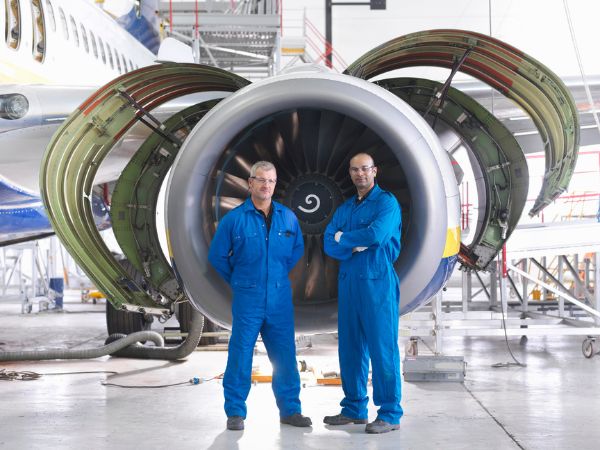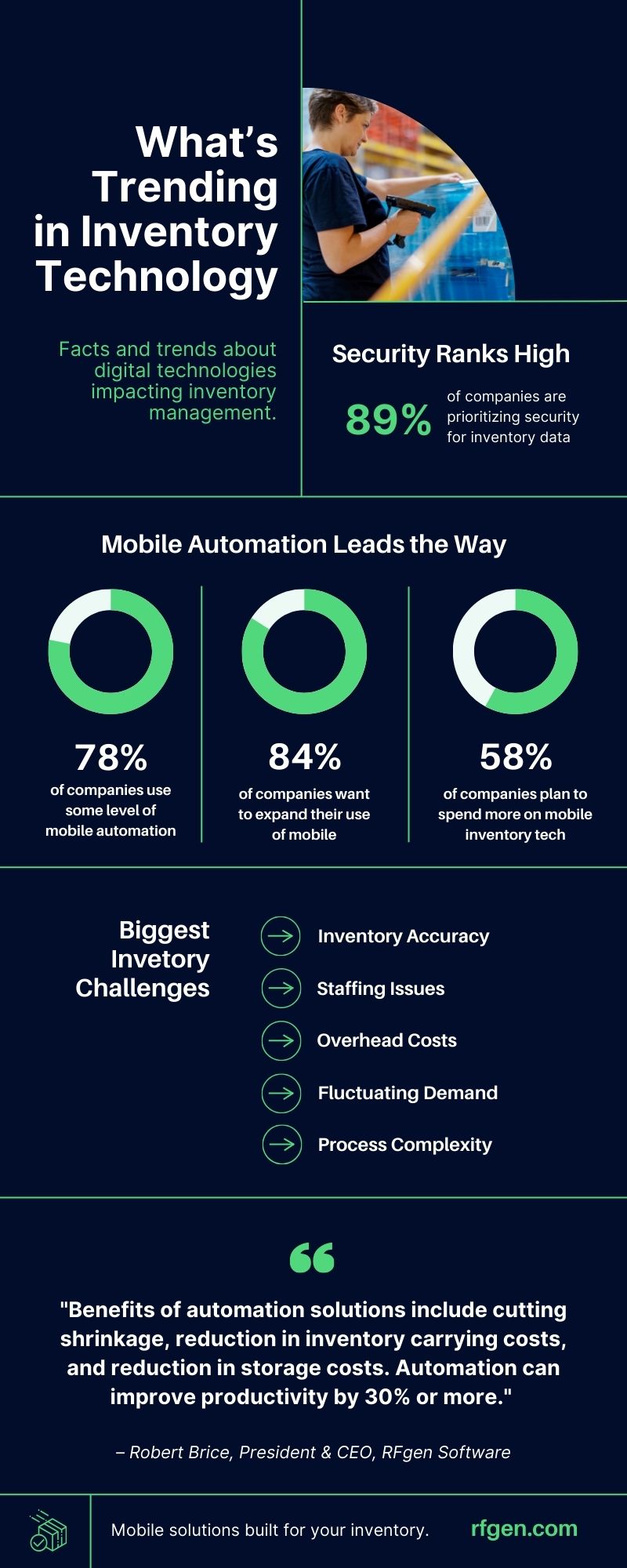Quality, Efficiency Essential as Aerospace Manufacturers Face Complexity
- Aerospace & Defense
- Manufacturing

Aerospace manufacturers continue to drive innovation in precision engineering. As these companies grapple with complex workflows and tight profit margins, the industry seems to be getting even more demanding. As a result, manufacturers face more challenges than ever. While balancing rising labor and input costs with high demand for manufacturing quality, the regulatory environment is likewise becoming more stringent.
For these reason, very high levels of efficiency are required in order to remain profitable and competitive. Aerospace and defense companies are finding that technology is key to becoming more efficient in production without sacrificing customer service or quality.
Current State of Aerospace Manufacturing
Aerospace manufacturing remains a robust force in today’s economy, contributing more than 1.65% to the total U.S. GDP each year. That translates to $418B in economic value. This is no surprise given that the A&D industry employs more than 2.1 million workers.
Recent years have seen a significant evolution in aerospace manufacturing. The integration of advanced technologies such as artificial intelligence and robotics has revolutionized production processes, enhancing precision and manufacturing efficiency. These technologies enable manufacturers to handle complex designs and tasks with greater accuracy, reducing the likelihood of errors and improving overall productivity.
The industry is rapidly adapting to these technological advancements, seeking to capitalize on their potential to streamline operations and drive innovation.
Additionally, according to the Deloitte Research Center, in 2023 “the aerospace and defense (A&D) industry witnessed a revival in product demand” and services. Both of these upward trends are expected to continue in light of ongoing geopolitical uncertainty.

eBook: How to Achieve End-to-End Traceability in A&D
DOWNLOAD NOW »Economic Factors Influencing the Aerospace Industry
While the aerospace sector supports the economy in a significant way, it is influenced in kind by global economic factors. Fluctuations in international markets, varying levels of defense spending by governments, and changes in commercial airline demands all play pivotal roles.
Current economic headwinds, such as inflation, affect material costs and operational expenses. Meanwhile, international trade policies around the war in Ukraine, the conflict in Israel, and rising U.S.-China tensions impact supply chains and export opportunities.
For the United States, the leading export destinations of aerospace and defense products include France, Canada, the United Kingdom, and Japan. While these countries make up the lion’s share of exports, the United States exports to 213 countries in all.
New opportunities are opening up in the space race, as well. NASA is currently requesting a budget of $27.1 billion for 2024 (a 7% increase over 2023). NASA plans to utilize those funds for “continued research on the International Space Station (ISS) and space exploration to create scientific and economic opportunities.”

Infographic: A Brief Guide to ROI for Warehouse Software
LEARN MORE »Challenges in Aerospace Manufacturing
At the heart of A&D is manufacturing. Not only in terms of creating products to sell to customers, but in terms of inputs. Challenges in production threaten the rest of the supply chain.
But what challenges are impacting aerospace manufacturing today?
Deloitte’s report found that the top challenges facing aerospace and defense companies include:
- Rising wage and salary levels in an “intensely competitive job market”
- Greater complexity in global supply chains
- The need for digital transformation to “unlock growth and efficiency”
- Applications for emerging technologies like generative AI, IoT/IIoT, and blockchain
To surmount these challenges, A&D companies will need to leverage cost-effective technologies capable of boosting efficiency and quality.

Solve these challenges and more with end-to-end supply chain solutions.
LEARN MORE »Solving Aerospace Manufacturing Challenges with Technology
One of the key technologies proven to mitigate these challenges areas is mobile barcoding. In addition to equipping workers with wireless barcode scanners, smart devices can be combined with real-time backend automation for Enterprise Resource Planning (ERP) systems to unlock new levels of efficiency.
Here’s how mobile automation (with barcoding) is making a difference:
- Managing Labor Challenges: Mobile barcoding acts as a force multiplier for workers, increasing productivity and flexibility. By enabling quick and accurate data capture and access, it reduces the time and effort required for inventory management and tracking. In short, fewer employees can do more, in less time, more accurately, and feel safer and better about a job well done.
- Simplifying Complex Global Supply Chains: Real-time tracking and ERP automation help simplify complex operations in manufacturing and distribution. Even complicated data sets associated with traceability and lot-controlled inventory can be greatly streamlined.
- Facilitating Digital Transformation: Mobile barcoding continues to play a crucial role in digital transformation. As it essentially digitizes paper or manual processes, capturing only perfect data for your ERP system, agile manufacturing would be impossible without it.
- Integrating with Emerging Technologies: Unlike a traditional barcode system, mobile barcoding employs advanced automation capabilities, including integration with powerful technologies like IoT devices, IIoT devices, autonomous vehicles (AVGs), scales, carousels, co-bots, and more. Any technical system that collects or transmits data can be integrated.

Video: Get to Know Mobile Solutions for Aerospace & Defense
WATCH NOW »Sustainability in Aerospace Manufacturing
As environmental concerns gain prominence, sustainability has become a key focus in aerospace manufacturing. The industry is increasingly exploring and implementing eco-friendly practices, from using sustainable materials to optimizing manufacturing processes for energy efficiency. These efforts are not only a response to regulatory pressures but also a reflection of a growing awareness of the industry’s environmental footprint. Sustainable manufacturing practices not only benefit the environment but can also lead to cost savings and improved brand reputation, making them a win-win for manufacturers and the planet alike.
While momentous sustainable initiatives may be unrealistic for some, any aerospace manufacturer can take basic steps to eliminate paperwork and extra energy use. Again, digital transformation in manufacturing offers a solution. And again, mobile barcoding provides a cost-effective means of eliminating manual processes in favor of real-time digital automation.
The Rise of 3D Printing and Its Effects
3D printing, also called additive manufacturing, once a niche technology, is quickly emerging as mainstream in aerospace manufacturing. Its ability to create complex components with less material waste and reduced manufacturing time has transformed traditional production methods.
This technology allows for the streamlined digital design of components, leading to cost reductions and faster production cycles.
However, it also introduces new challenges in supply chain management, as 3D printing often utilizes different materials and processes compared to traditional methods. Compliance with regulated part standards may also be difficult.
In any case, the rising prominence of 3D printing is beginning to reshape the industry’s approach to manufacturing, emphasizing the need for adaptability in both material sourcing and process management.

Video: Move Ahead with Mobile Manufacturing Solutions
WATCH VIDEO »Case Studies of Innovation in Aerospace
Recent success stories in the aerospace industry highlight how companies are overcoming challenges through innovation.
One such company, Carlisle Interconnect Technologies, integrated mobile automation from RFgen to digitally transform its inventory management. Armed with a state-of-the-art mobile barcoding solution, CarlisleIT gained the following benefits:
- Reduced staffing needs to complete customer orders
- Increased receiving speed by 40%
- Consolidated 5 ERP transactions to just 2 scans
- Enabled 40% faster issuing of materials to the floor
- Improved accuracy of raw materials to over 99%
- Eliminated annual inventory inspections with automated cycle counting
Now that CarlisleIT had a digital manufacturing strategy in place, the company was able to continue innovating, driving efficiency, quality, and profits.

Discover More Aerospace & Defense Case Studies
EXPLORE NOW »Aerospace Manufacturing: Future Outlook
With so many complexities in play in aerospace manufacturing, A&D businesses must continually adapt. From labor challenges to rising overhead costs, technology can play a role in mitigating disruption and improving efficiency and quality. As technological advancements, geopolitical economic situations, regulatory changes, and talent retention needs continue to evolve, only those A&D manufacturers that prioritize digital transformation and automation will succeed in the world of tomorrow. Mobile barcoding is one such technology already in use by thousands of aerospace companies across the globe. Those businesses that fail to modernize risk being left behind.






